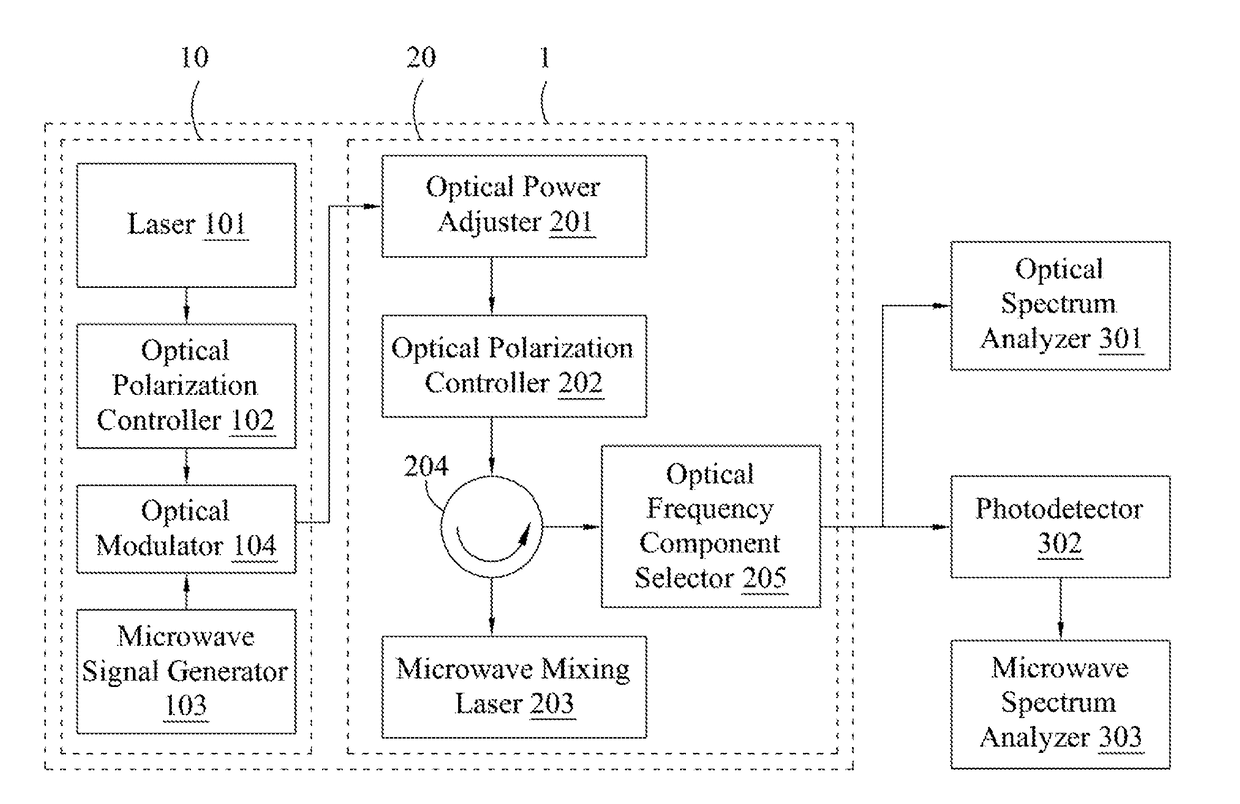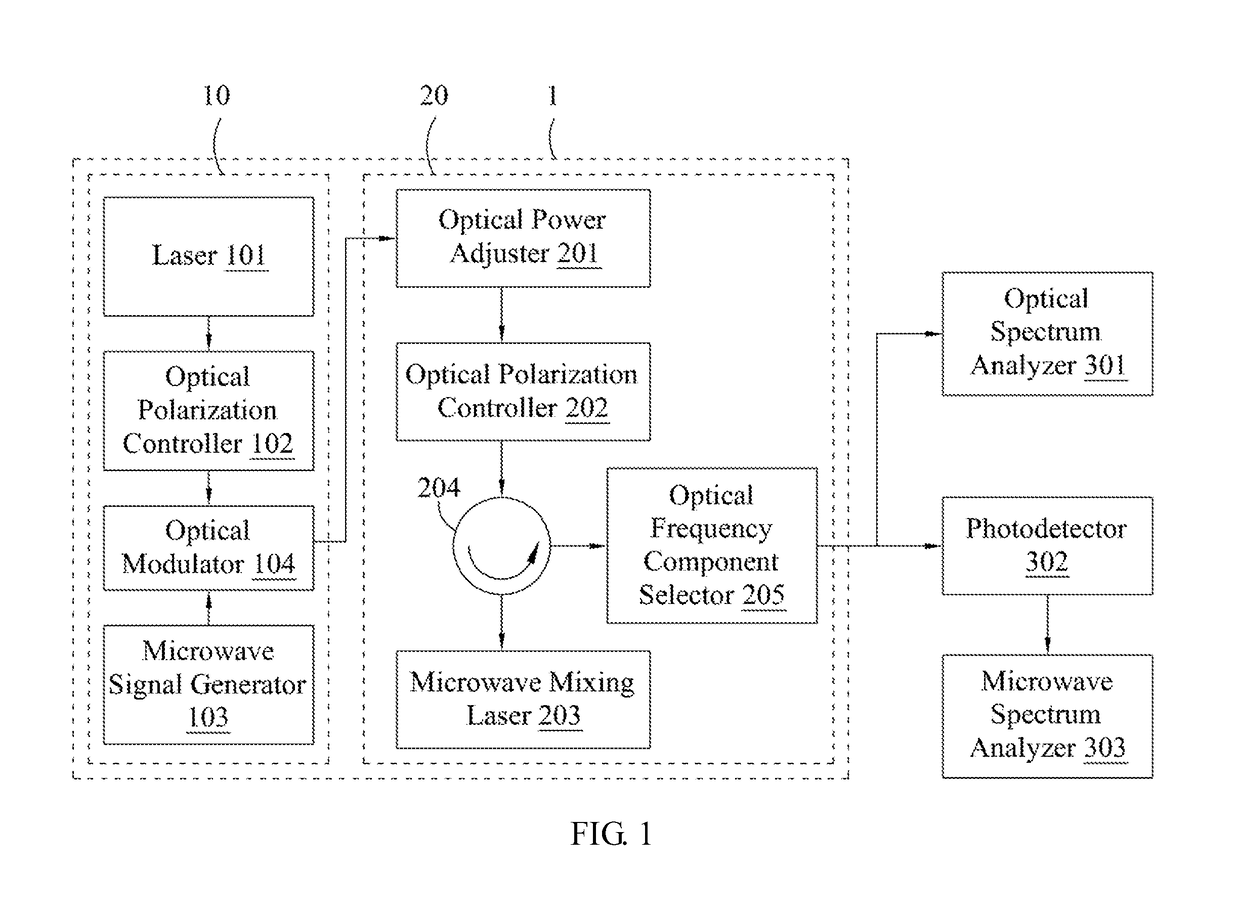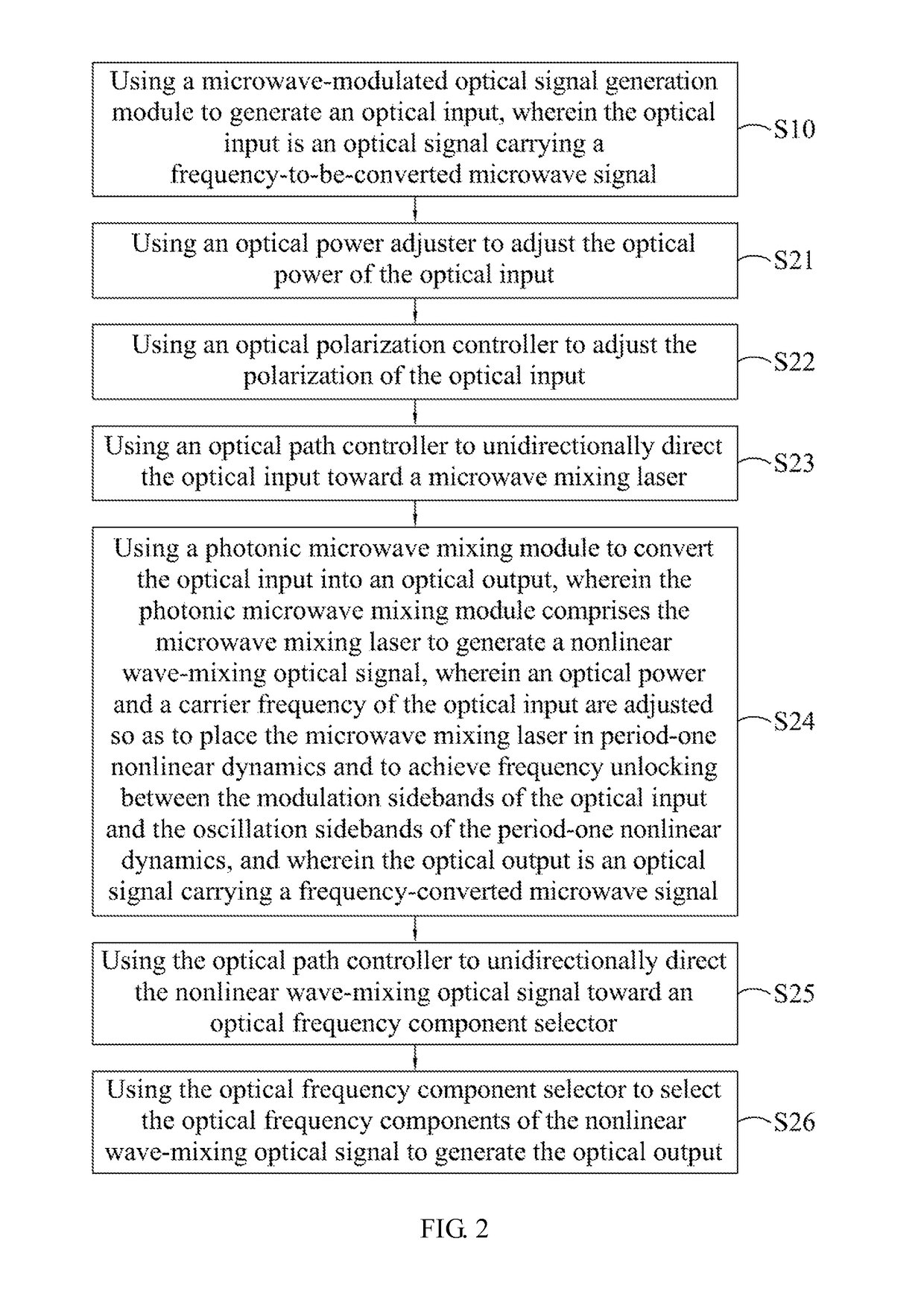Photonic microwave mixing apparatus and method thereof
a mixing apparatus and microwave technology, applied in the field of photonic microwave mixing apparatus and method, can solve the problems of inability to provide high-frequency microwave mixing, high system power consumption, and inability to achieve highly precise optical phase difference between the two interfering optical signals, etc., to achieve the effect of reducing the need for high-frequency yet expensive electronics, broad spectral range, and low phase noise level
- Summary
- Abstract
- Description
- Claims
- Application Information
AI Technical Summary
Benefits of technology
Problems solved by technology
Method used
Image
Examples
Embodiment Construction
[0052]To illustrate the device structure, operating principle, and advantageous characteristics of the present invention, a preferred embodiment and the corresponding drawings are provided with more details. The purpose of the drawings being used is for illustration, and they are not necessarily the real proportion and precise allocation of the embodiments of the present invention. Therefore, they should not be used to limit the privilege coverage of the practical embodiments of the present invention.
[0053]Referring to FIG. 1, FIG. 1 is a schematic representation of a photonic microwave mixing apparatus according to a preferred embodiment of the present invention. As shown in FIG. 1, a photonic microwave mixing apparatus 1 includes a photonic microwave mixing module 20. The photonic microwave mixing module 20 converts an optical input, which is an optical signal carrying a frequency-to-be-converted microwave signal, into an optical output, which is an optical signal carrying a frequ...
PUM
| Property | Measurement | Unit |
|---|---|---|
| oscillation frequency f0 | aaaaa | aaaaa |
| oscillation frequency f0 | aaaaa | aaaaa |
| offset frequency | aaaaa | aaaaa |
Abstract
Description
Claims
Application Information
 Login to view more
Login to view more - R&D Engineer
- R&D Manager
- IP Professional
- Industry Leading Data Capabilities
- Powerful AI technology
- Patent DNA Extraction
Browse by: Latest US Patents, China's latest patents, Technical Efficacy Thesaurus, Application Domain, Technology Topic.
© 2024 PatSnap. All rights reserved.Legal|Privacy policy|Modern Slavery Act Transparency Statement|Sitemap



